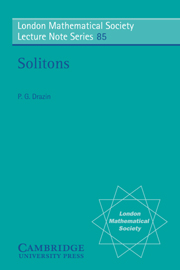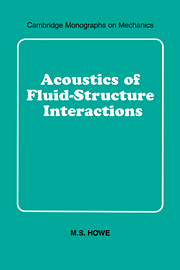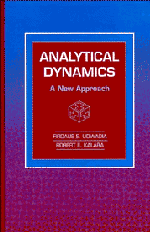Refine search
Actions for selected content:
8126 results in Fluid dynamics and solid mechanics
64 - Digression: The Thermodynamic Laws in the Presence of Species Transport
- from PART XII - SPECIES DIFFUSION COUPLED TO ELASTICITY
-
- Book:
- The Mechanics and Thermodynamics of Continua
- Published online:
- 05 June 2012
- Print publication:
- 19 April 2010, pp 371-373
-
- Chapter
- Export citation
77 - Inversion of the Mises Flow Rule: Ėp in Terms of Ė and T
- from PART XIII - THEORY OF ISOTROPIC PLASTIC SOLIDS UNDERGOING SMALL DEFORMATIONS
-
- Book:
- The Mechanics and Thermodynamics of Continua
- Published online:
- 05 June 2012
- Print publication:
- 19 April 2010, pp 445-448
-
- Chapter
- Export citation
2 - Tensor Algebra
- from PART I - VECTOR AND TENSOR ALGEBRA
-
- Book:
- The Mechanics and Thermodynamics of Continua
- Published online:
- 05 June 2012
- Print publication:
- 19 April 2010, pp 9-38
-
- Chapter
- Export citation
14 - Motions with Constant Velocity Gradient
- from PART III - KINEMATICS
-
- Book:
- The Mechanics and Thermodynamics of Continua
- Published online:
- 05 June 2012
- Print publication:
- 19 April 2010, pp 107-108
-
- Chapter
- Export citation
Frontmatter
-
- Book:
- The Mechanics and Thermodynamics of Continua
- Published online:
- 05 June 2012
- Print publication:
- 19 April 2010, pp i-iv
-
- Chapter
- Export citation
41 - Consequences of the Heat-Conduction Inequality
- from PART VIII - RIGID HEAT CONDUCTORS
-
- Book:
- The Mechanics and Thermodynamics of Continua
- Published online:
- 05 June 2012
- Print publication:
- 19 April 2010, pp 236-236
-
- Chapter
- Export citation
References
-
- Book:
- The Mechanics and Thermodynamics of Continua
- Published online:
- 05 June 2012
- Print publication:
- 19 April 2010, pp 671-682
-
- Chapter
- Export citation
57 - Constitutive Theory
- from PART XI - THERMOELASTICITY
-
- Book:
- The Mechanics and Thermodynamics of Continua
- Published online:
- 05 June 2012
- Print publication:
- 19 April 2010, pp 335-347
-
- Chapter
- Export citation
98 - Yield Surface. Yield Function. Consistency Condition
- from PART XVI - LARGE-DEFORMATION THEORY OF ISOTROPIC PLASTIC SOLIDS
-
- Book:
- The Mechanics and Thermodynamics of Continua
- Published online:
- 05 June 2012
- Print publication:
- 19 April 2010, pp 569-570
-
- Chapter
- Export citation
PART XVIII - SINGLE CRYSTALS UNDERGOING LARGE DEFORMATIONS
-
- Book:
- The Mechanics and Thermodynamics of Continua
- Published online:
- 05 June 2012
- Print publication:
- 19 April 2010, pp 621-622
-
- Chapter
- Export citation
20 - Frames of Reference
- from PART IV - BASIC MECHANICAL PRINCIPLES
-
- Book:
- The Mechanics and Thermodynamics of Continua
- Published online:
- 05 June 2012
- Print publication:
- 19 April 2010, pp 146-156
-
- Chapter
- Export citation
112 - Single-Crystal Plasticity at Small Length Scales: A Large-Deformation Gradient Theory
- from PART XVIII - SINGLE CRYSTALS UNDERGOING LARGE DEFORMATIONS
-
- Book:
- The Mechanics and Thermodynamics of Continua
- Published online:
- 05 June 2012
- Print publication:
- 19 April 2010, pp 653-662
-
- Chapter
- Export citation
51 - Simple Shear of a Homogeneous, Isotropic Elastic Body
- from PART X - MECHANICAL THEORY OF ELASTIC SOLIDS
-
- Book:
- The Mechanics and Thermodynamics of Continua
- Published online:
- 05 June 2012
- Print publication:
- 19 April 2010, pp 294-296
-
- Chapter
- Export citation
107 - The Burgers Vector and the Flow of Screw and Edge Dislocations
- from PART XVIII - SINGLE CRYSTALS UNDERGOING LARGE DEFORMATIONS
-
- Book:
- The Mechanics and Thermodynamics of Continua
- Published online:
- 05 June 2012
- Print publication:
- 19 April 2010, pp 626-633
-
- Chapter
- Export citation
100 - Evolution Equation for the Second Piola Stress
- from PART XVI - LARGE-DEFORMATION THEORY OF ISOTROPIC PLASTIC SOLIDS
-
- Book:
- The Mechanics and Thermodynamics of Continua
- Published online:
- 05 June 2012
- Print publication:
- 19 April 2010, pp 576-578
-
- Chapter
- Export citation
59 - Linear Thermoelasticity
- from PART XI - THERMOELASTICITY
-
- Book:
- The Mechanics and Thermodynamics of Continua
- Published online:
- 05 June 2012
- Print publication:
- 19 April 2010, pp 354-360
-
- Chapter
- Export citation

Waves and Mean Flows
-
- Published online:
- 29 March 2010
- Print publication:
- 20 August 2009

Solitons
-
- Published online:
- 25 March 2010
- Print publication:
- 21 July 1983

Acoustics of Fluid-Structure Interactions
-
- Published online:
- 22 March 2010
- Print publication:
- 13 August 1998

Analytical Dynamics
- A New Approach
-
- Published online:
- 22 March 2010
- Print publication:
- 23 February 1996
